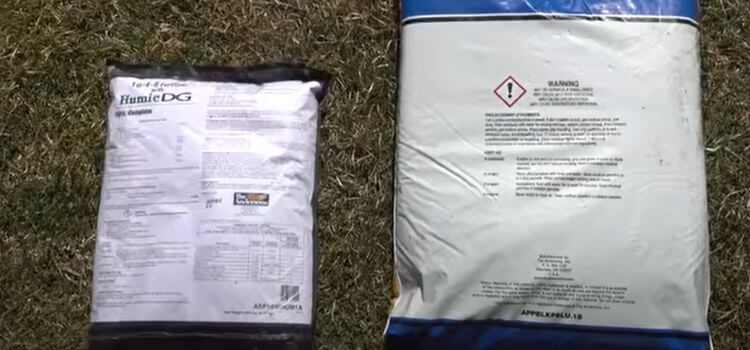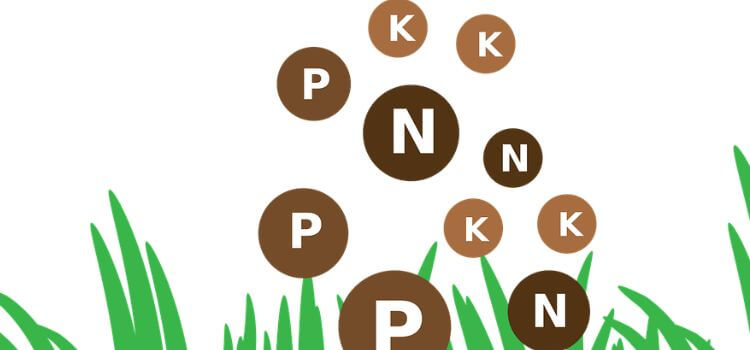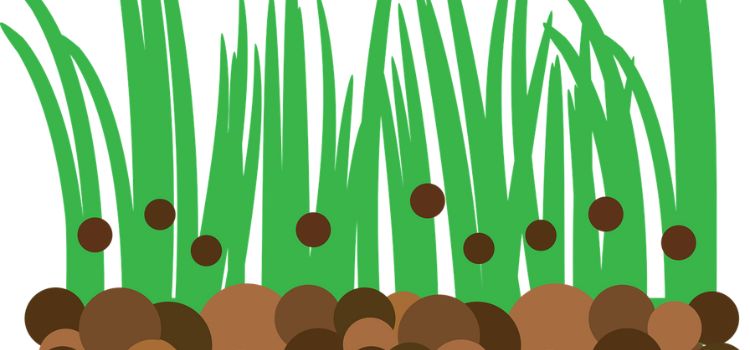As an Amazon Associate, I earn from qualifying purchases.
Lawn fertilizer provides essential nutrients for grass growth, while lawn food offers a broader range of nutrients and organic matter.
Lawn fertilizer and food are crucial in maintaining a healthy, vibrant lawn. Fertilizer is a mix of nitrogen, phosphorus, and potassium, vital for grass health. Lawn food, on the other hand, often includes organic ingredients that improve soil structure and provide a more comprehensive array of nutrients.
Choosing the right product depends on your lawn’s needs and soil conditions. Regularly feeding your lawn helps ensure lush, green grass and prevents common problems like yellowing and weak growth.
What Is Lawn Fertilizer?
Understanding your lawn’s needs is important. Although lawn fertilizer and lawn food might sound the same, they are different in many ways. Knowing these differences helps you make the best choice for your garden.
Nutrient Composition
Lawn fertilizers contain nutrients like nitrogen, phosphorus, and potassium. These nutrients help the grass grow strong and healthy. Fertilizers come in different ratios. Choose the right one for your lawn needs.

Types Of Lawn Fertilizers
There are organic and synthetic fertilizers. Organic fertilizers come from natural sources. Artificial fertilizers are made from chemicals. Both have their pros and cons. Organic fertilizers improve soil health. Synthetic fertilizers give quick results.
Application Methods
Granular fertilizers are spread on the lawn. They break down slowly over time. Liquid fertilizers are mixed with water and sprayed. They are absorbed quickly by the grass. Choose the method that fits your schedule.
Definition And Purpose
Lawn food is a type of fertilizer that provides extra nutrients for the lawn. It often includes added vitamins and minerals, helping the grass stay green and lush.
Key Ingredients
Lawn food often contains extra ingredients, including iron, magnesium, and calcium. These elements support overall lawn health and help grass resist diseases and stress.
Using lawn food has many benefits. It promotes a deep green colour in your grass. It also helps strengthen the roots, making the lawn more drought-resistant. Lawn food can also improve soil structure.
Benefits Of Using Lawn Fertilizer
A beautiful lawn makes your home look lovely. Lawn fertilizer helps your grass grow green and firm. It contains essential nutrients your lawn needs. Lawn food is different but also helps your lawn. Let’s explore their benefits.
Improves Soil Health
Fertilizer adds nutrients to the soil. This makes the soil healthy. Healthy soil helps grass grow better. Fertilizer also helps the soil hold water. This means you don’t have to water the lawn as much.
Provides Essential Nutrients
Lawn fertilizer provides essential nutrients like nitrogen, phosphorus, and potassium. These nutrients are crucial for grass growth. Nitrogen helps grass grow green and firm. Phosphorus helps the roots grow deep. Potassium helps the grass resist disease.
Promotes Faster Growth
Using fertilizer makes grass grow faster. Fast growth means a thicker and greener lawn, which helps prevent weeds. Weeds can’t grow well when the grass is thick.
Easy To Apply
Lawn fertilizer is easy to apply. You can use a spreader or just your hands. Applying it evenly is important, as this ensures all parts of the lawn get the nutrients they need.
Cost-effective
Fertilizer is a cost-effective way to improve your lawn. A small amount can cover a large area, saving you money while keeping your lawn healthy.
Different Types Of Lawn Fertilizers
Understanding the differences between lawn fertilizer and lawn food can help you maintain a healthy yard. Fertilizers provide essential nutrients, while lawn food nourishes the soil. Both play crucial roles in lawn care. Knowing the different types of lawn fertilizers can guide you in choosing the best option for your grass. Each type has unique benefits and drawbacks.
Organic Fertilizers
Organic fertilizers are derived from natural sources. They include compost, manure, and bone meal. These fertilizers release nutrients slowly, improving soil health over time. They are environmentally friendly and promote long-term soil fertility. Here’s a quick overview of their benefits:
- Improves soil structure and texture
- Enhances water retention and drainage
- Promotes beneficial microbial activity
Organic fertilizers provide a balanced nutrient supply. They are less likely to cause nutrient burn. They are safe for pets and children. Yet, they may be more expensive and slower to show results. Here’s a comparison table for better understanding:
| Advantages | Disadvantages |
|---|---|
| Improves soil health | Slower nutrient release |
| Environmentally friendly | Higher cost |
| Safe for pets and kids | Less immediate results |
Synthetic Fertilizers
Synthetic fertilizers are made from chemical compounds. They provide nutrients in a readily available form. These fertilizers offer quick results and are often less expensive. Here are some benefits:
- Immediate nutrient availability
- Cost-effective
- Precise nutrient ratios
Synthetic fertilizers can be tailored to specific needs. They are easy to apply and show quick results. Yet, they can harm the environment if overused. Here’s a comparison table to illustrate:
| Advantages | Disadvantages |
|---|---|
| Quick nutrient release | Potential for nutrient runoff |
| Lower cost | Can harm beneficial soil organisms |
| Easy to apply | May cause nutrient burn |
What Is Lawn Food?
Lawn food is a special mix of nutrients that helps grass grow strong and green. It is different from lawn fertilizer, which is often chemical-based. Lawn food often contains natural ingredients, including compost and organic matter.
Ingredients Of Lawn Food
Lawn food contains organic matter. It also has compost and microorganisms. These ingredients help the soil. They provide long-term benefits to your lawn. Lawn food is often safer for the environment.
Lawn fertilizer is a product containing specific nutrients in chemical form. It provides quick results and helps grass grow fast and green. Fertilizers can be synthetic or organic, and they are usually more concentrated.
Ingredients Of Lawn Fertilizer
Fertilizers contain nitrogen, phosphorus, and potassium, which are essential for plant growth. They may also include other chemicals which can help control weeds and pests.
Benefits Of Lawn Food
- Promotes healthy soil.
- Supports long-term lawn health.
- Environmentally friendly.
- Reduces the need for chemicals.
Benefits Of Lawn Fertilizer
- Provides quick results.
- Boosts grass growth.
- Contains essential nutrients.
- It can help control pests.
Benefits Of Using Lawn Food
Healthy grass needs proper nutrients to grow. Lawn food and fertilizer help in different ways. Understanding their benefits can make your lawn lush and green. Let’s explore how lawn food can benefit your yard.
Nutrient-rich Formulation
Lawn food provides a balanced mix of nutrients. It often contains nitrogen, phosphorus, and potassium, which are essential for healthy grass growth. Lawn food also includes micronutrients, which help boost overall plant health.
Slow Release Of Nutrients
Many lawn foods offer a slow-release formula, which means nutrients are given to the grass over time. Slow release helps avoid nutrient burn and ensures plants get a steady supply of food, leading to stronger and greener grass.
Improves Soil Health
Lawn food often improves soil quality. It adds organic matter to the soil. This organic matter helps retain moisture. Healthy soil supports root growth. It also reduces soil compaction. Better soil means healthier grass.
Safe For Kids And Pets
Many lawn foods are safe for kids and pets. They use natural ingredients that are not harmful, so families can enjoy the lawn without worry. Always check the label for safety information.
Environmental Benefits
Using lawn food can be eco-friendly. Organic options reduce chemical runoff. They also support local ecosystems. Healthy lawns can improve air quality. They also reduce soil erosion.
Critical Differences Between Lawn Fertilizer And Lawn Food
Understanding the critical differences between lawn fertilizer and lawn food is essential for a thriving lawn. Many people use these terms interchangeably, but they are different. Knowing what each product does helps you make the right choice for your lawn’s needs.
Composition
Lawn fertilizers are chemical or natural substances added to the soil. They contain three primary nutrients:
- Nitrogen (N) – Promotes lush, green growth.
- Phosphorus (P) – Aids in root development.
- Potassium (K) – Helps with overall plant health.
These nutrients are often listed on the package as N-P-K ratios. For example, a 10-10-10 fertilizer has equal parts of each nutrient. Lawn food, on the other hand, is a broader term. It can include fertilizers but also other ingredients:
- Compost – Organic matter that improves soil quality.
- Microbes – Beneficial bacteria and fungi that help break down organic matter.
- Micro-nutrients – Elements like iron and magnesium are needed in smaller amounts.
The main difference lies in including organic matter and beneficial organisms in lawn food. Fertilizers focus solely on nutrient supply.
Application
Applying lawn fertilizer involves spreading the granules or liquid evenly over the lawn. This can be done using a spreader or a sprayer. It’s essential to follow the instructions on the package to avoid over-fertilization. Lawn food can be applied similarly, but there are some differences:
- Timing – Lawn food is often applied less frequently.
- Method – Some lawn foods are mixed into the soil or used as a top dressing.
- Preparation – Organic lawn food may require some preparation, like composting.
Both products need water to activate their ingredients. Watering helps dissolve the nutrients and allows them to reach the roots. Fertilizers typically show results faster, while lawn food may take longer but offers long-term benefits.
Effectiveness
Fertilizers provide a quick nutrient boost. This results in faster growth and greener grass. Lawn food offers more sustainable results. It improves soil health and supports a more resilient lawn.
Short-term vs. Long-term:
| Aspect | Fertilizer | Lawn Food |
|---|---|---|
| Speed of Results | Fast | Slow |
| Soil Health | Minimal Impact | Improves Over Time |
| Cost | Usually Cheaper | Can Be More Expensive |
Choosing the right product depends on your lawn’s needs. If you need quick results, go for fertilizer. If you aim for a healthier lawn, in the long run, lawn food is better.

Which Should You Choose: Lawn Fertilizer Or Lawn Food?
Choosing between lawn fertilizer and lawn food can take time and effort. Both products help lawns grow, but they each have different roles and benefits. Knowing these differences enables you to pick the right one for your grass.
Understanding Lawn Fertilizer
Lawn fertilizer provides grass with essential nutrients, including nitrogen, phosphorus, and potassium. Fertilizers come in various forms, such as granular, liquid, or slow-release.
Granular fertilizers are easy to spread, liquid fertilizers act quickly, and slow-release fertilizers provide nutrients over time. Choose the type that best suits your lawn’s needs.
Lawn food is a complete product that includes fertilizers and other ingredients, such as soil conditioners or growth enhancers.
These additions help improve the soil. They make it easier for grass to take up nutrients. Lawn food supports overall lawn health.
Comparing Benefits
| Aspect | Lawn Fertilizer | Lawn Food |
|---|---|---|
| Primary Function | Provides specific nutrients | Supports overall lawn health |
| Types Available | Granular, liquid, slow-release | Complete products with multiple ingredients |
| Application Frequency | Depends on the type | Generally less frequent |
Choosing The Right Product
Think about your lawn’s current condition. If it lacks specific nutrients, choose a lawn fertilizer. For overall health improvement, lawn food is a better option.
Always read the labels and follow the instructions for the best results. Healthy grass makes your yard look incredible.
Frequently Asked Questions
What Is Better, Lawn Food Or Fertilizer?
Lawn food and fertilizer serve different purposes. Lawn food promotes overall grass health, while fertilizer supplies essential nutrients. Choose based on your lawn’s specific needs.
When Should You Use Lawn Food?
Use lawn food in early spring, late spring, summer, and fall. Apply when the grass is actively growing. Ensure the soil is moist before application.
What Is The Difference Between Plant Food And Fertilizer?
Plant food provides essential nutrients for plant growth, often including organic matter. Fertilizer is a chemical or natural substance added to soil to enhance fertility.
Should I Seed Or Fertilize My Lawn?
Seed your lawn to fill in bare spots and establish new growth. Fertilize to provide essential nutrients for healthy grass. Both practices are necessary for a lush, green lawn.
Conclusion
Choosing between lawn fertilizer and lawn food depends on your lawn’s needs. Both options offer unique benefits. Fertilizer provides essential nutrients, while lawn food includes added organic matter. Evaluate your lawn’s condition and requirements. This ensures you select the best product for a lush, healthy lawn year-round.

